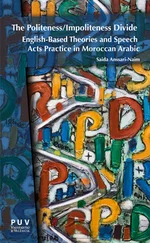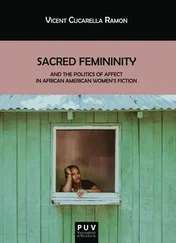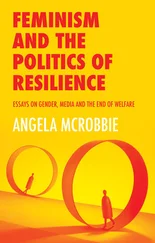A combination of political competition and policy production processes explain São Paulo's incremental trajectory of policy change. Each of these processes alone would probably lead to very different results. The comparative literature suggests that political competition alone may lead to a race to the bottom of clientelist practices (Herrera 2017), while, despite the hopes of many authors, civil society activism alone may produce visible mobilizations but rarely produces policy change without the necessary embeddedness in policy processes (Banaszak 2010; Abers 2019; Gurza Lavalle et al. 2019). On the other hand, the authoritarian experiences in Latin America during the 1960s and 1970s confirm that strong and insulated State actors by themselves may imply technocratic reasoning and bureaucratic capture. It was the combination of these features that led policies in São Paulo toward incremental progressivism.
Political competition triggered two combined mechanisms that explain the actions and strategies of mayors and other local elite political actors: namely, partisan politics (Hubber and Stephens 2013) and median voter (Meltzer and Richard 1981) mechanisms. However, policies were produced and delivered in processes that involved local agencies, bureaucrats, private contractors and activists in different combinations according to policy. This foregrounds processes and feedback mechanisms not foreseen by traditional policy theories (Kingdom 1984; Sabatier and Jenkins‐Smith 1993) to explain different policy rhythms and resilience. It is worth detailing each of these mechanisms before discussing the actors and processes involved in them in the next section.
Partisan politics theory suggests that increases in redistributive policies and State capacities under democracies usually occur during left‐wing governments due to their ideology (Levitsky and Roberts 2011; Hubber and Stephens 2013). This would explain the development of social and redistributive policies and the decline in inequality in Latin America during the so‐called “pink tide” in the 2000s. Similar results were found for urban policies in the United States by Hajnal and Trounstine (2017) and Einstein and Glick (2018) and road infrastructure policies in São Paulo by Marques (2003).
We define redistributive urban policies as those that reduce inequalities in access to services and amenities, improve service quality, and enhance the wellbeing of the poor. Obviously, financial and contributory (or not) features of policies influence their degrees of redistribution, but these go far beyond economic factors alone. Therefore, it is the overall design and functioning of policies that define their redistributive features. In mobility policies, for example, bus fare prices are essential, but the existence of smart cards is even more central since these allow multiple journeys with just a single fare or fares, irrespective of the traveled distance. Likewise, dedicated bus lanes or corridors can reduce the otherwise absurd travel times to segregated poor peripheries. Sometimes expanding services and improving quality are indissociable, but in other cases, these may advance separately or even at the expense of each other.
The presence of redistributive policies under specific governments clearly challenges classic public choice interpretations (Peterson 1982), which maintained that mayors would systematically seek to promote growth and avoid redistributive policies, in a fortunate convergence with political economy growth machine predictions (Molotch 1976). The lack of choices in local politics, however, has already been confronted by the urban regime and governance typologies that anticipated the existence of several types of regime, including redistributive (Stone 1993; Pierre 2011), depending on the composition of the electorate, local bureaucracies, and political conjunctures.
The policies we analyze here confirm the relevance of local politics, showing that redistributive policy changes, especially the more conflictive ones, mainly occurred under left‐wing administrations. Also in line with this theory, center governments produced a much lower but intermediary number of redistributive programs, while right‐wing administrations an almost negligible amount. Additionally, to be able to produce and implement these policies, left‐wing governments enlarged State capacities, creating reinforcement mechanisms in favor of these policies, as we discuss later.
On the other hand, median voter theory predicts that in democratic countries where most of the population is poor, or, put more technically, where median voter income is below the average income, all politicians will try to please poor voters, since they constitute the majority (Meltzer and Richard 1981). Both left and right‐wing administrations would converge, therefore, on producing redistributive policies, improving their quality, or at least avoiding policies that could harm these voters. 6 Obviously, this convergence represents a tendency, and social mobilization and political pressure from above or below can reduce or intensify this tendency (Fairfield and Garay 2017), at the same time that institutional and economic constraints may reinforce this convergence independently of political ideology (Pasotti 2010a), such as balancing the budget or providing poor relief policies during periods of profound economic and social crisis, respectively.
In São Paulo, politicians and parties of different ideologies 7 fiercely competed in majoritarian elections over an electorate mostly composed of low and mid‐low income voters, not to mention the pressures applied by social movements, especially those targeting housing and transportation. Consistently with median voter predictions, therefore, all governments tended to maintain policies that reduce urban inequalities (although still with higher intensity among the left), especially in less conflictive policy areas, such as expanding infrastructure to peripheral spaces, mostly inhabited by the poor due to urban segregation.
Some redistributive policy changes were more resilient, however, and survived under right‐wing administrations, while others were discontinued or severely reduced. The policies that became a permanent item on the agenda include, for example, public transportation innovations and slum upgrading, while discontinued policies include mainly those initiatives that impact land values, such as active planning, redistributive land use, and social housing for rent. These different trajectories are explained not only by the actors involved but also by the distinct policy processes that produced them.
However, before discussing the policies themselves, it is useful to begin with the distinction between easy and hard redistribution made by Holland and Schneider (2017). This concept sought to explain the limits of the “pink tide” in Latin America in the 2000s, distinguishing widely expanded non‐contributory social benefits (easy) from much rarer labor decommodification policies (hard). In urban contexts, it is reasonable to consider hard redistribution policies as those that influence land values (and thus the wealth of land and homeowners, as well as developers), create zero‐sum games with the wellbeing of elites and the rich, or actively interfere in the interests of private service providers. Easy redistribution involves policies that improve the quality of life of the poor and their access to services but without impacting the wealth of the rich. The case of São Paulo suggests that easy distribution policies may be implemented under any government (although they are usually also first developed under left‐wing administrations), while hard distribution only happens during left‐wing governments. 8
With this distinction in mind, we can return to policy production processes. Once decisions are made, policies must be produced and delivered, which brings bureaucrats, private contractors and policy community actors to center‐stage. These actors interact with politicians within policy‐specific governance patterns (Le Galès 2011) and are involved in the production and operation of all policies, irrespective of producing easy or hard redistribution.
Читать дальше












